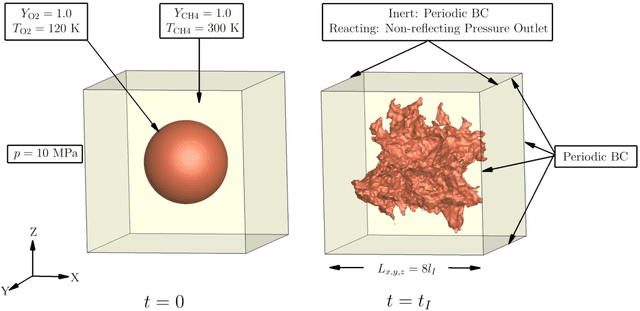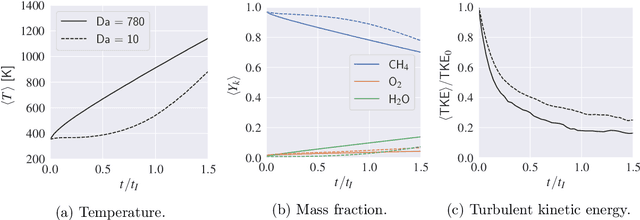Interpretable Data-driven Methods for Subgrid-scale Closure in LES for Transcritical LOX/GCH4 Combustion
Paper and Code
Mar 11, 2021



Many practical combustion systems such as those in rockets, gas turbines, and internal combustion engines operate under high pressures that surpass the thermodynamic critical limit of fuel-oxidizer mixtures. These conditions require the consideration of complex fluid behaviors that pose challenges for numerical simulations, casting doubts on the validity of existing subgrid-scale (SGS) models in large-eddy simulations of these systems. While data-driven methods have shown high accuracy as closure models in simulations of turbulent flames, these models are often criticized for lack of physical interpretability, wherein they provide answers but no insight into their underlying rationale. The objective of this study is to assess SGS stress models from conventional physics-driven approaches and an interpretable machine learning algorithm, i.e., the random forest regressor, in a turbulent transcritical non-premixed flame. To this end, direct numerical simulations (DNS) of transcritical liquid-oxygen/gaseous-methane (LOX/GCH4) inert and reacting flows are performed. Using this data, a priori analysis is performed on the Favre-filtered DNS data to examine the accuracy of physics-based and random forest SGS-models under these conditions. SGS stresses calculated with the gradient model show good agreement with the exact terms extracted from filtered DNS. The accuracy of the random-forest regressor decreased when physics-based constraints are applied to the feature set. Results demonstrate that random forests can perform as effectively as algebraic models when modeling subgrid stresses, only when trained on a sufficiently representative database. The employment of random forest feature importance score is shown to provide insight into discovering subgrid-scale stresses through sparse regression.
 Add to Chrome
Add to Chrome Add to Firefox
Add to Firefox Add to Edge
Add to Edge